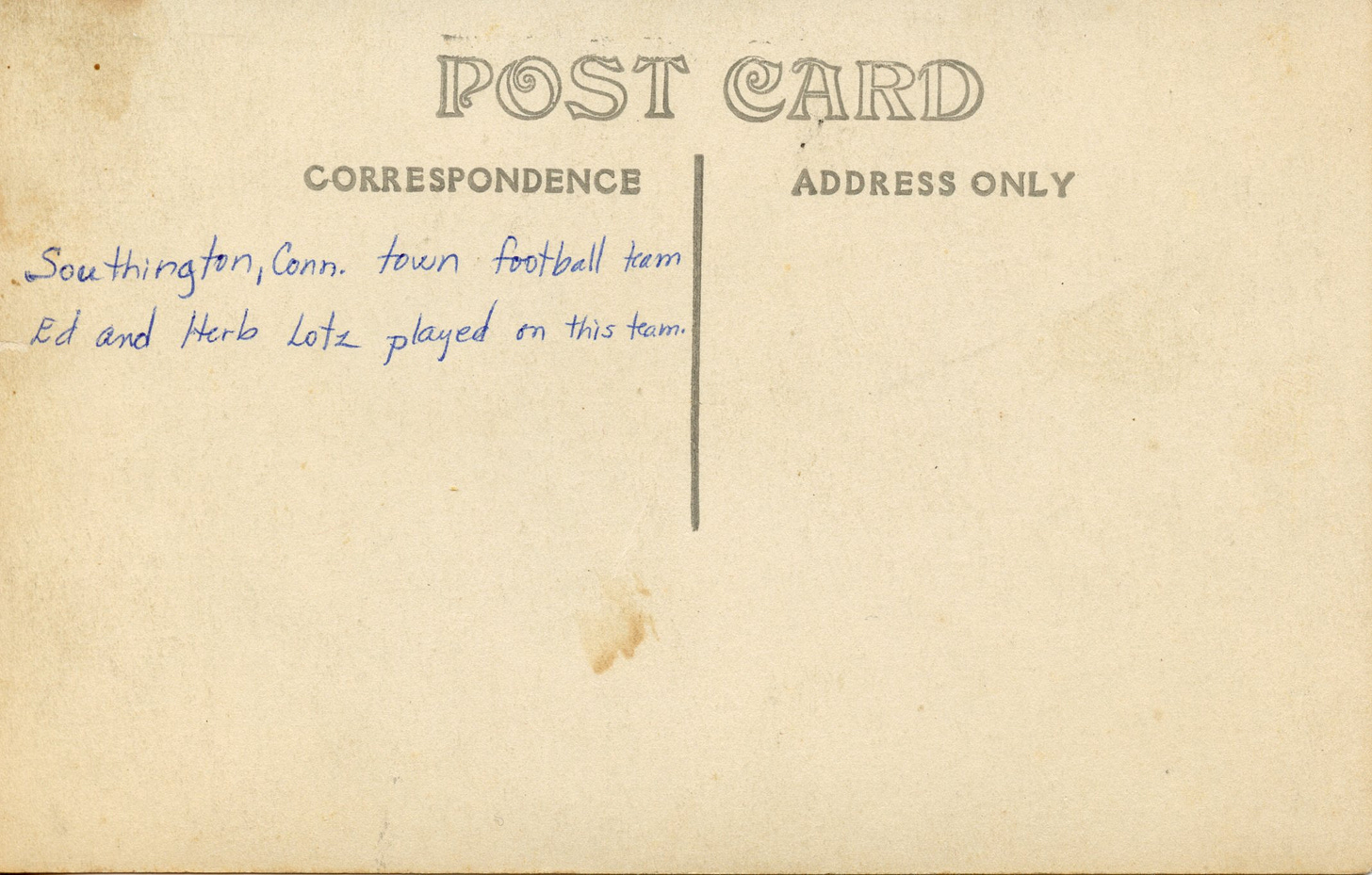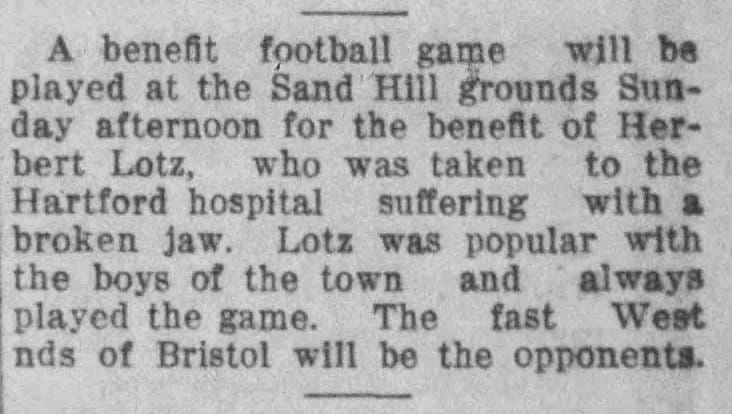Today's Tidbit... Lotz Going On With Southington Football
With the college championship game approaching and the NFL playoffs in full swing, it is easy to focus our attention on football played at the highest levels. Stories about the game's greats, great moments, and cathedral stadiums all bring a particular joy, but I also love stories about teams I had never heard of and did not know I should care about until I did.
While stories of football history cover the pro leagues and major colleges, there are far more football players at the DIII and high school levels whose stories are seldom told. The same occurred in the past before the GI Bill, and society's need for more college-educated folks led to so many attending college.
A century ago, less than 10 percent of people attended college. Athletic young men who wanted to play football after high school could enlist in the military and play for their regimental or base team. If the military was not their cup of tea, the local semi-pro or town team provided an option.
All kinds of towns had teams gridiron teams. Most followed eligibility assumptions that players had to live there, work there, or otherwise have a good claim to being a citizen of Whatever Town, USA.
Previous articles about town teams and similar outfits include the following, one of which covers a town team playing the state prison:
So, I recently acquired the postcard below. It's an action shot, though the image does not provide clues about who is playing in the game.

However, the back side of the unmailed RPPC tells us the image shows a Southington, Connecticut, town team for which Ed and Herb Lotz played.
Based on the information on the back, it’s unclear whether the Lotz brothers are in the image, though one hopes so, or if the image corresponds to when the Lotzes were involved with the team, though one would think so. However, the uniform styles, the absence of helmets on half the players, and what looks like a Panama hat on the linesman suggest a game from the 1910s.
Those clues led me to search for when the Lotz brothers played for Southie and whether any interesting stories surrounded the team or their play.
The first article I found concerned a 1910 game between Meriden and Southington High Schools. In it, Meriden clobbered Southington despite one of the Lotz brothers starring and captaining the losing side. There may be a story there.
Other articles showed that the Southington Athletic Association sponsored teams in football and basketball, and perhaps other sports.
Later, we see that F. (Fred) Lotz started at right tackle, and Lotz (Herb) started at fullback in a 1912 loss to the Frog Hollow Tigers of Hartford.
Younger brother William also played for Southington at the high school and town team level, starting with Herb in a 1915 game against the Meriden Tiger Cubs.
The Lotz brothers' football playing days may have ended following a Thanksgiving Day game with the Almighties. The 21-year-old Herbert played quarterback in the game but lost a tooth and broke his jaw in the action, which sent him to a hospital in Hartford. His teammates and the community rallied around him by playing another football game to raise money to help pay for his hospital bills.
Herbert must have recovered well since he joined the Army Medical Corps during WWI. All three football-playing Lotzes ultimately became chiropractors or physicians, so perhaps Herbert's broken jaw influenced their decision to practice the healing arts.
That was a lotta words about the Lotz, and a fantastic story did not emerge, but hopefully, you enjoyed the telling.
Click here for options on how to support this site beyond a free subscription.










The University of North Carolina's early football history includes several games against towns' Athletic Clubs. Until the 2024 season the only team UNC had played from Charlotte, was such a team. A quirk of the largest city in the state not having a college team until recently.
One player's presence that surprised me, since I had no idea of the local history, was Stephen A Douglas' grandson on the Greensboro (NC) team. Dick Douglas was a Georgetown grad and youngest State Attorney General of NC (25) in history.